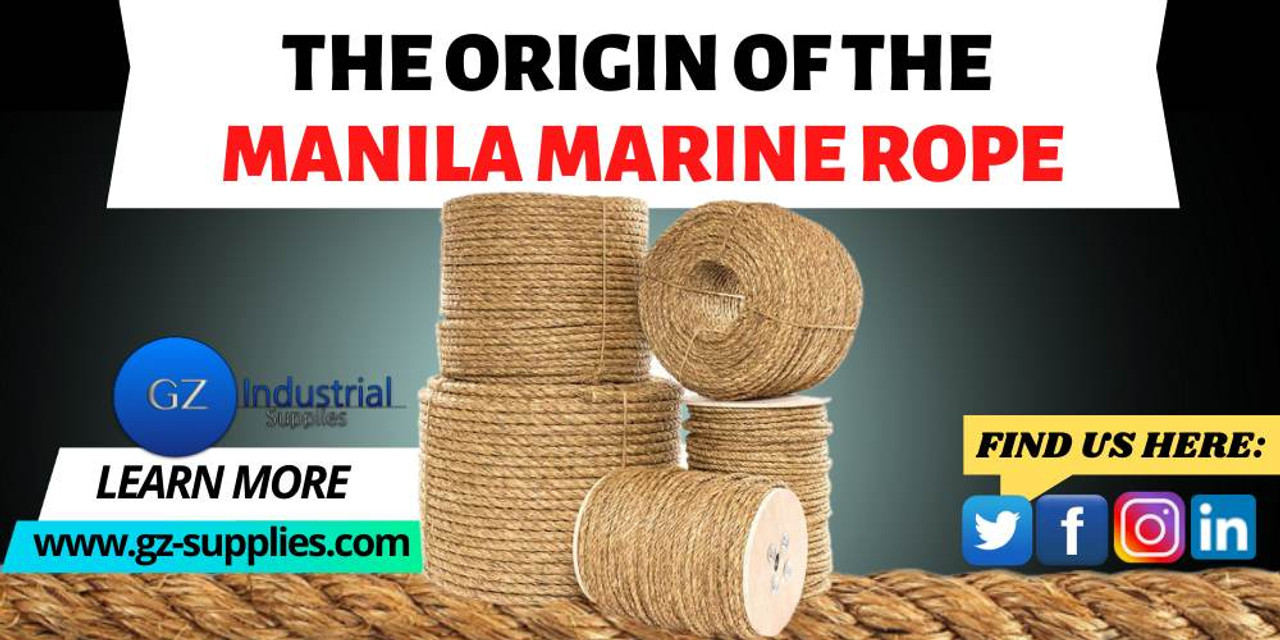The Origin of the Manila Marine Rope
Here is the audio of this Article
Manila rope is durable, flexible, and resistant to salt water damage, allowing its use in the string, hawsers, ships' lines, and fishing nets. We can use it to make handcrafts like bags, carpets, clothing, furniture, and hangings. But one of the most crucial applications of Manilla rope is in Marine operations. This article explores the origin of the manila marine rope. but first lets talk about its invention and subsequent commercialisation and application Marine operations.
Manila rope, referred to as hemp rope, is perhaps the first image that comes to mind when one hears the word "rope." It is made of manila hemp, a natural fiber from the leaves of the abacá plant, which is native to the Philippines. British Naval Captain James Cook is responsible for giving manila hemp fiber its name in the late 1700s on one of his expeditions. He named it Manila, after the capital of the Philippines. Interestingly, manila hemp is not hemp, but since all functional rope, before this time was made from hemp, Captain Cook assumed that manila rope was also. For thousands of years, this rope was used for everything from ship lines to making clothing. Modern times, the manila rope has long been the number one choice for towing, safety lines, climbing, landscaping, and countless other uses. Though synthetic ropes (Such as Polypropylene, Nylon, and polyester ropes) began gaining popularity in the 1950s due to their non-shrinking properties and mildew resistance, the manila rope has maintained its popularity and reputation through the years.
Manila marine rope is flexible yet non-stretching, durable, and resistant to salt water damage. For these reasons, it is a common choice for ship lines, fishing nets, and various general utility and decorative purposes. You may recall seeing it in rope courses and gymnasiums—its popularity in these environments is due to its ability to absorb sweat and act as a good grip. Also, unlike synthetic ropes, the manila rope does not melt when coming in contact with hot wires, making it a top choice for utility contractors and those working close to live wires. Landscapers and contractors often use manila rope for fence rails, along pathways, and for decorative outdoor purposes due to its decomposability and reputation as the most environment-friendly high-strength rope. Manila rope is also famous for scouting projects and any situation involving knot-tying, as its non-slip grip makes it impeccable at holding knots.
Whether you need a rope for general utility purposes, outdoor activities, décor, or even tug of war, the manila rope is a classic choice for a strong, durable, and natural rope.
FMS is proud to source the highest quality manila rope. Choose between 1/4-inch, 5/16-inch, 3/8-inch, 1/2-inch, 5/8-inch, 3/4-inch, 1-inch, 1.25-inch, 1.5-inch, 2-inch, and 3-inch diameters in many different lengths.
Check out this historic stock footage of Manila Hemp trees (abacá plant) being processed for Manila Rope fiber in Davao, Philippines.
The natural strength and all around utility of manila rope has made it the standard for quality rope. Manila rope consists of all-natural hemp fibers. This creates aesthetic appeal commonly used for decorative fences or other landscaping purposes.
Because of susceptibility to liquid absorption and UV decay, the user should be careful of sustained tension on the rope especially when exposed to the elements. Manila’s absorbing quality makes it the first choice for many physical activities that require direct handling of the rope. For purposes such as tug of war, climbing, obstacle courses, or stage rigging, manila rope absorbs perspiration providing better grip. This rope will not hazardously snap back when broken as other synthetic ropes may. For a quality natural rope that is aesthetically appealing and safe for active handling, manila rope is an excellent choice.
PROS & CONS
- Positives: Visually appealing, snap-resistant, low-cost.
- Negatives: Not UV or water resistant, may harden or rot over long periods of time.
- Most Common Uses: Pulling, decoration, landscaping, rigging.
https://youtu.be/N2oi9cHGTfo
Above Video is the production of Manila Hemp, also known as Manilla, in Davao, Philippines during World War II. A farm of Manila Hemp (the plant is actually the abacá plant or Musa textilis, a relative of the banana, then frequently used to make "Manila Rope." But the colloquial name for it at the time was Manila Hemp). Farmers were cutting, stripping, and drying Manila Hemp. A Japanese officer on the farm supervises. Manila Hemp is loaded on a cart and taken to a shipping yard for shipping. Location: Davao Philippines. Date: January 1943.







